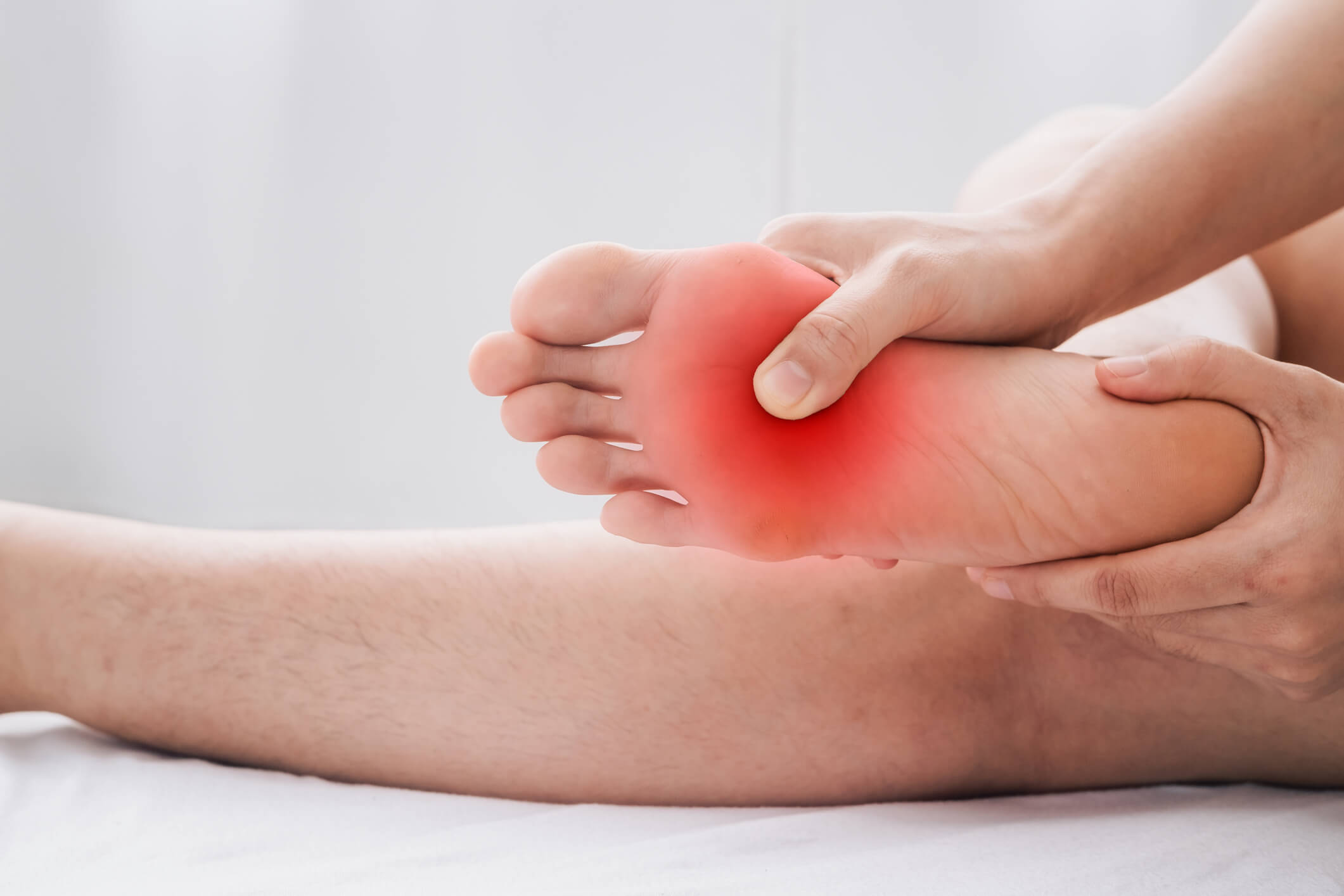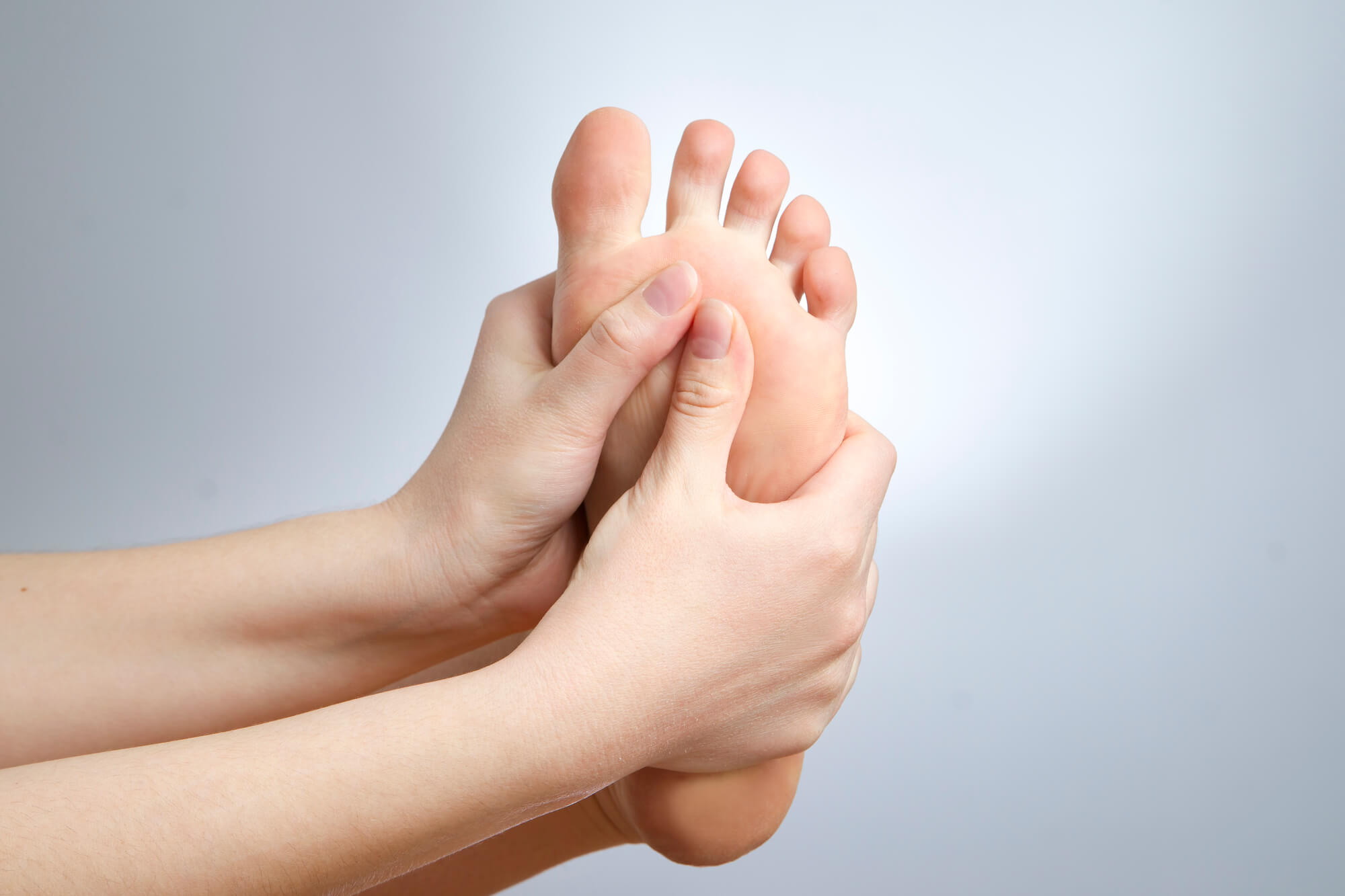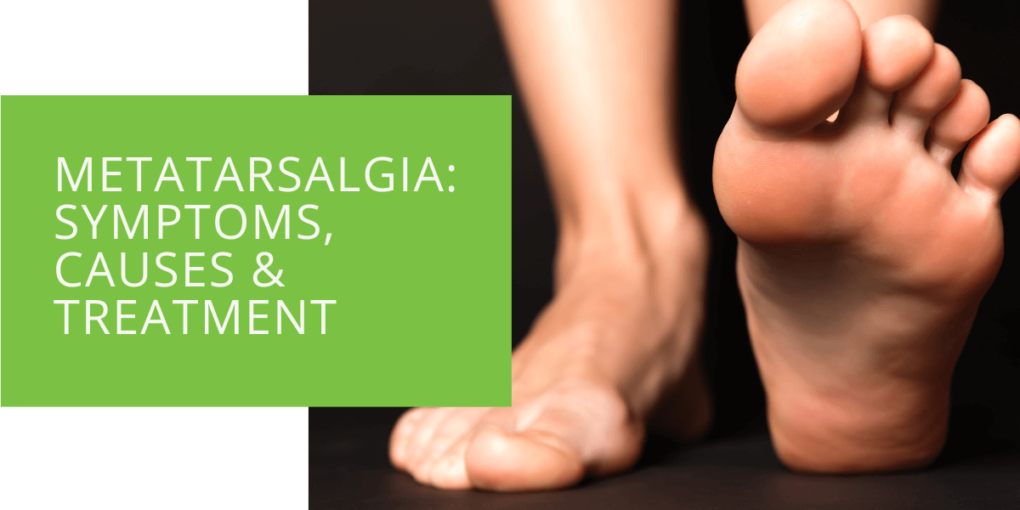Metatarsalgia: Symptoms, Causes & Treatment
Metatarsalgia is a common foot condition that causes pain in the ball of the foot, also known as the metatarsal region. It can be a debilitating condition for those who suffer from it, but fortunately, it is often treatable with various options. In this article, we'll explore the symptoms, causes, and treatment options for metatarsalgia so you can better understand how to manage this condition and find relief from the discomfort.
What is Metatarsalgia?
Metatarsalgia is a type of foot pain that affects the metatarsal region, or the ball of the foot. Various factors, including overuse or repetitive strain, structural issues with the foot, high-impact physical activities or occupations, and improper footwear, can cause it.
The metatarsal region is located between the arch of the foot and the toes. It comprises the metatarsal bones, which support the body's weight and help us walk. When the metatarsal region becomes inflamed or painful, standing or walking for extended periods can be difficult.
Symptoms of metatarsalgia can include pain in the ball of the foot, inflammation in the metatarsal region, tenderness to touch in the affected area, difficulty walking or standing for extended periods, and a feeling of numbness or tingle in the toes. If you are experiencing any of these symptoms, it is important to seek medical attention from a podiatrist or other medical professional to determine the cause of your discomfort and find the most appropriate treatment options.

What Causes Metatarsalgia?
Several factors can contribute to the development of metatarsalgia. Some of the most common causes include:
Overuse and Repetitive Strain
One of the most common causes of metatarsalgia is overuse or repetitive strain. This can occur when you engage in activities that strain your feet, such as running, jumping, or walking long distances. This strain can lead to inflammation and discomfort in the metatarsal region.
Structural Issues with the Foot
Structural issues with the foot can also cause metatarsalgia. For example, if you have a high arch or a deformity in your foot, you may be more prone to developing this condition. A neuroma, a benign nerve tissue tumor, can also cause pain in the ball of the foot.
High-Impact Physical Activities or Occupations
Certain high-impact physical activities or occupations can also cause metatarsalgia. For example, if you play a lot of high-impact sports or work in a job that requires you to stand or walk for long periods, you may be more prone to developing this condition.
Improper Footwear
Improper footwear can also contribute to the development of metatarsalgia. Shoes or high heels that do not provide sufficient support for the metatarsal region can cause pain and inflammation in this area. For example, wearing shoes with a high heel or a narrow toe box may make you more likely to develop metatarsalgia.

How is Metatarsalgia Diagnosed and Treated?
If you are experiencing pain in the ball of your foot, it is important to seek medical attention to determine the cause of your discomfort. A podiatrist or other medical professional can diagnose metatarsalgia and recommend the most appropriate treatment options.
Diagnosis
To diagnose metatarsalgia, a podiatrist will typically perform a physical examination of your foot and ask about your medical history and any symptoms you are experiencing. They may also recommend imaging tests, such as an X-ray or MRI, to better look at the structure of your foot and identify any underlying issues that may be causing your pain.
Treatment Options
There are several treatment options available for metatarsalgia, including:
- Rest: One of the most effective ways to treat metatarsalgia is to give your foot a break from the activities that are causing the pain. This can involve taking a break from running or other high-impact activities or simply reducing your time on your feet.
- Ice: Applying ice to the affected area can help reduce inflammation and swelling. Ice your foot for 15-20 minutes at a time, several times a day.
- Medication: Over-the-counter pain medication, such as ibuprofen or acetaminophen, can help manage the pain associated with metatarsalgia. Your doctor may also prescribe stronger medication if needed.
- Orthotics: Custom-made orthotics, or inserts for your shoes, can help provide additional support for the metatarsal region and alleviate discomfort.
- Physical therapy: Working with a physical therapist can help strengthen the muscles in your foot and improve your gait, which can help reduce the pressure on the metatarsal region and alleviate pain.
- Surgery: In severe cases of metatarsalgia, surgery may be necessary to correct any underlying structural issues with the foot or to remove a neuroma.

Prevention
There are several steps you can take to prevent the development of metatarsalgia, including:
- Wearing shoes that fit properly: It is important to wear shoes that fit properly and provide adequate support for your foot. Avoid shoes with a high heel or a narrow toe box, as these can increase the pressure on the metatarsal region.
- Using metatarsal pads: Metatarsal pads, or inserts that go inside your shoes, can help provide additional cushioning and support for the metatarsal region.
- Stretching: Stretching your feet and toes before engaging in physical activities can help reduce the risk of metatarsalgia.
- Maintaining a healthy weight: Carrying excess weight puts additional strain on your feet, so maintaining a healthy weight can help prevent metatarsalgia.
When to Seek Medical Attention
If you are experiencing persistent pain in the ball of your foot that does not go away with rest and over-the-counter pain medication, it is important to seek medical attention. A podiatrist or other medical professional can help diagnose the cause of your pain and recommend the most appropriate treatment options.
Conclusion
Metatarsalgia is a common foot condition that can cause pain and discomfort in the ball of the foot. It is often caused by overuse or repetitive strain, structural issues with the foot, or high-impact physical activities or occupations. Improper footwear can also contribute to the development of metatarsalgia.
Treatment options include rest, ice, medication, orthotics, physical therapy, and in severe cases, surgery. To prevent metatarsalgia, it is important to wear shoes that fit properly, use metatarsal pads, stretch before physical activity, and maintain a healthy weight.
If you are experiencing persistent pain in the ball of your foot, it is important to seek medical attention from a podiatrist or other medical professional. They can help diagnose the cause of your pain and recommend the most appropriate treatment options to alleviate your discomfort and get you back on your feet.

